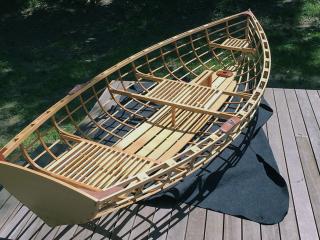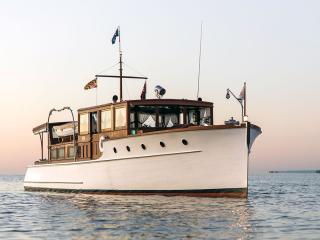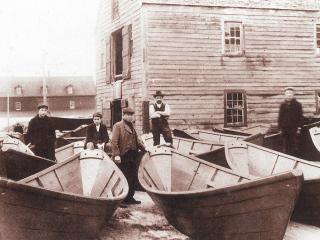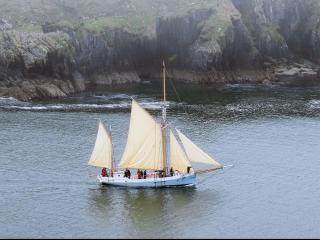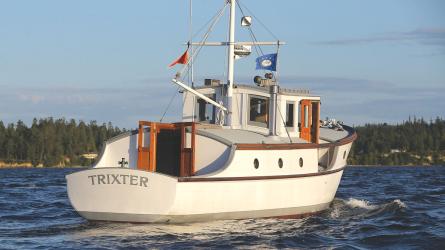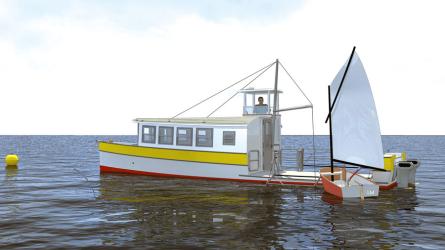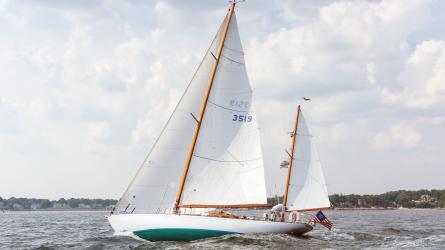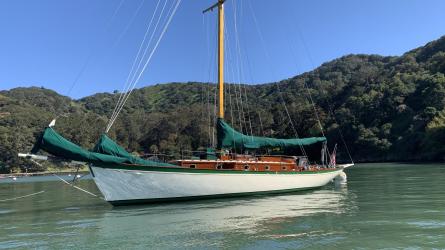March / April 2020
The Story as Artifact
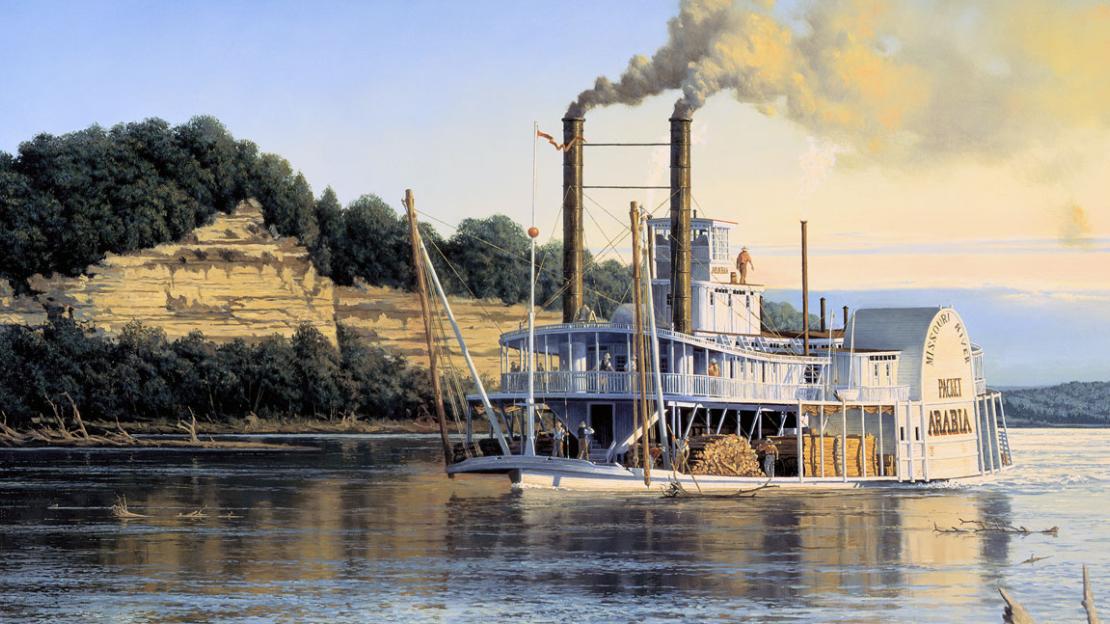
The 171’ steamboat ARABIA, depicted in this painting by Gary Lucy, was built in 1853 to carry cargo to western frontier towns along the Missouri River. She sank near current-day Kansas City, Missouri, on September 5, 1856, with 200 tons of cargo on board.
In its early days, the City Market of Kansas City, Missouri, was a hub of river traffic and trade. Although the area has changed considerably since the market opened in 1857, it’s still a bustling commercial center, hosting a regular farmer’s market, an active food court, boutiques, and specialty shops. In the heart of this now-historic district lies one of the city’s prized gems: the Arabia Steamboat Museum. While the museum holds a considerable collection of pre–Civil War artifacts, its real treasure is the story it tells.
That story begins in 1853 at the Pringle Boat-Building Company in Brownsville, Pennsylvania—a skilled and efficient yard that had clients as far away as California and South America. In 1853, Pringle built a new vessel for a group of Pennsylvania investors. Painted white and named ARABIA, she measured 171' LOA and had a 54' beam and 220 tons of cargo capacity. She was an average-sized river steamboat for her day, and was propelled by twin 28'-tall side-mounted paddle wheels, each driven by its own engine. Steam was created by burning coal and wood in a furnace located beneath three, two-tubed boilers. It was a massive undertaking to keep the boilers fueled; when the boat was underway, the furnace burned through 30 cords of wood each day.
ARABIA made her maiden voyage in 1853, to St. Louis. Between 1853 and 1855, she made numerous trips on the Ohio and Mississippi rivers, and in February 1855 she was purchased by Capt. John Shaw of St. Charles, Missouri. Shaw chartered the boat to carry government supplies and military personnel. His first journey with ARABIA took her from Fort Leavenworth, Kansas, to the remote military outpost of Fort Pierre, South Dakota, carrying 109 soldiers and supplies. The ship then continued 700 miles to the mouth of the Yellowstone River before returning to St. Louis. The entire voyage took nearly three months, and it proved that ARABIA was worthy of traveling on the Missouri River, which in those days was dangerous. The shallow Missouri is one of the siltiest rivers in the United States, and in the 1800s it carried even more sediment than it does now. This allowed no visibility beneath the surface, and the Missouri was filled with snags: tree trunks that had fallen into the river and become affixed to the river’s bottom. These snags made the river an aquatic minefield; while a steamboat working the Mississippi River had a life expectancy of five years, one on the Missouri was expected to last just two years.
To read the rest of this article:
Click the button below to log into your Digital Issue Access account.
No digital access? Subscribe or upgrade to a WoodenBoat Digital Subscription and finish reading this article as well as every article we have published for the past 50-years.
ACCESS TO EXPERIENCE
Subscribe Today
1 YEAR SUBSCRIPTION (6 ISSUES)
PLUS ACCESS TO MORE THAN 300 DIGITAL BACK ISSUES
DIGITAL $29.00
PRINT+DIGITAL $42.95
Subscribe
To read articles from previous issues, you can purchase the issue at The WoodenBoat Store link below.
 Purchase this issue from
Purchase this issue from
